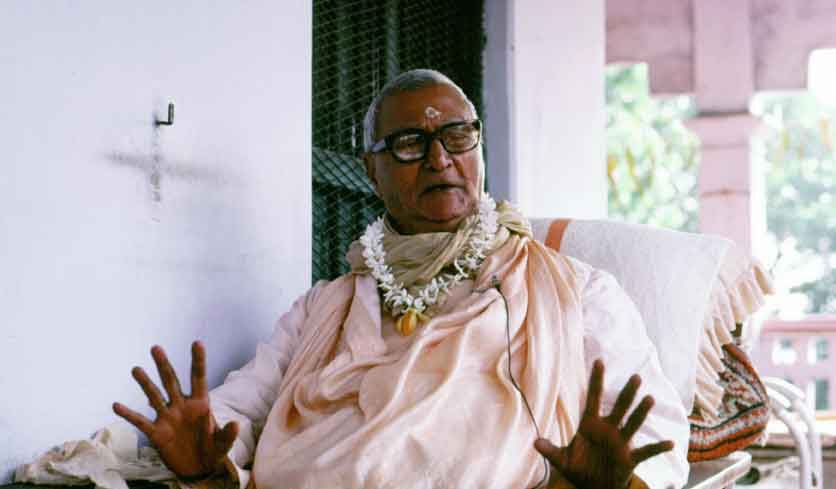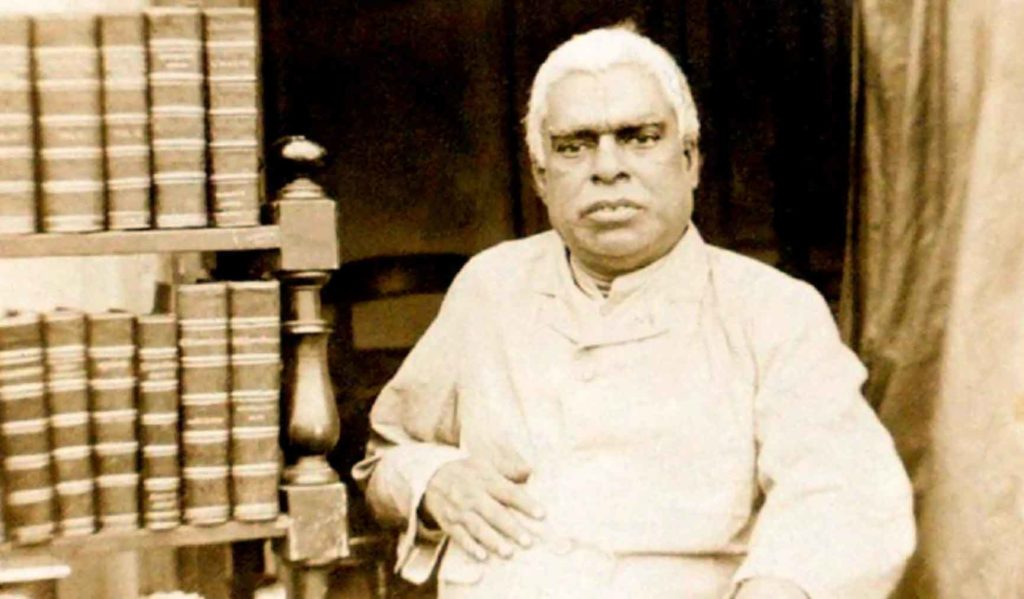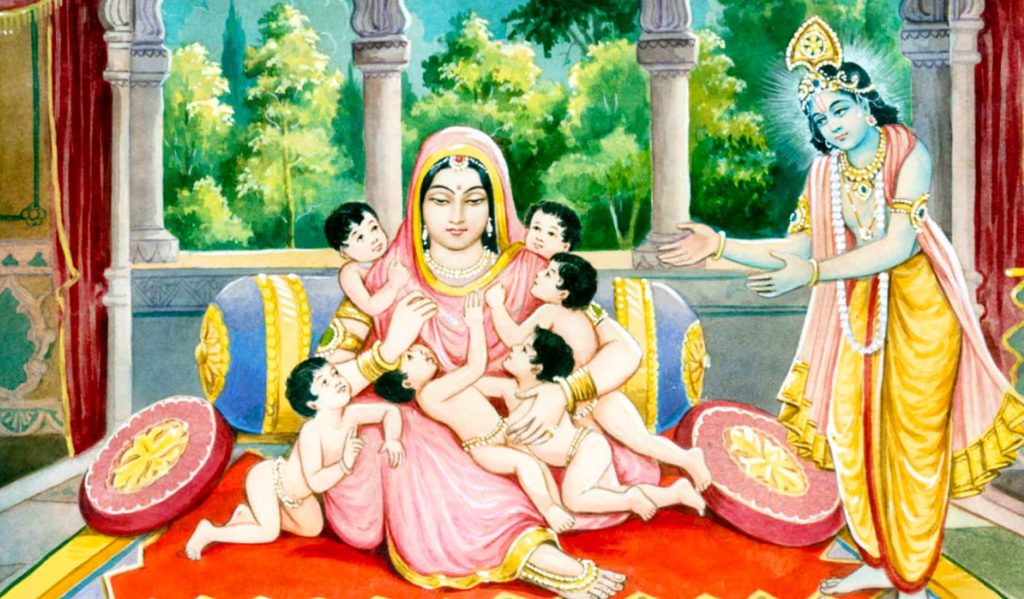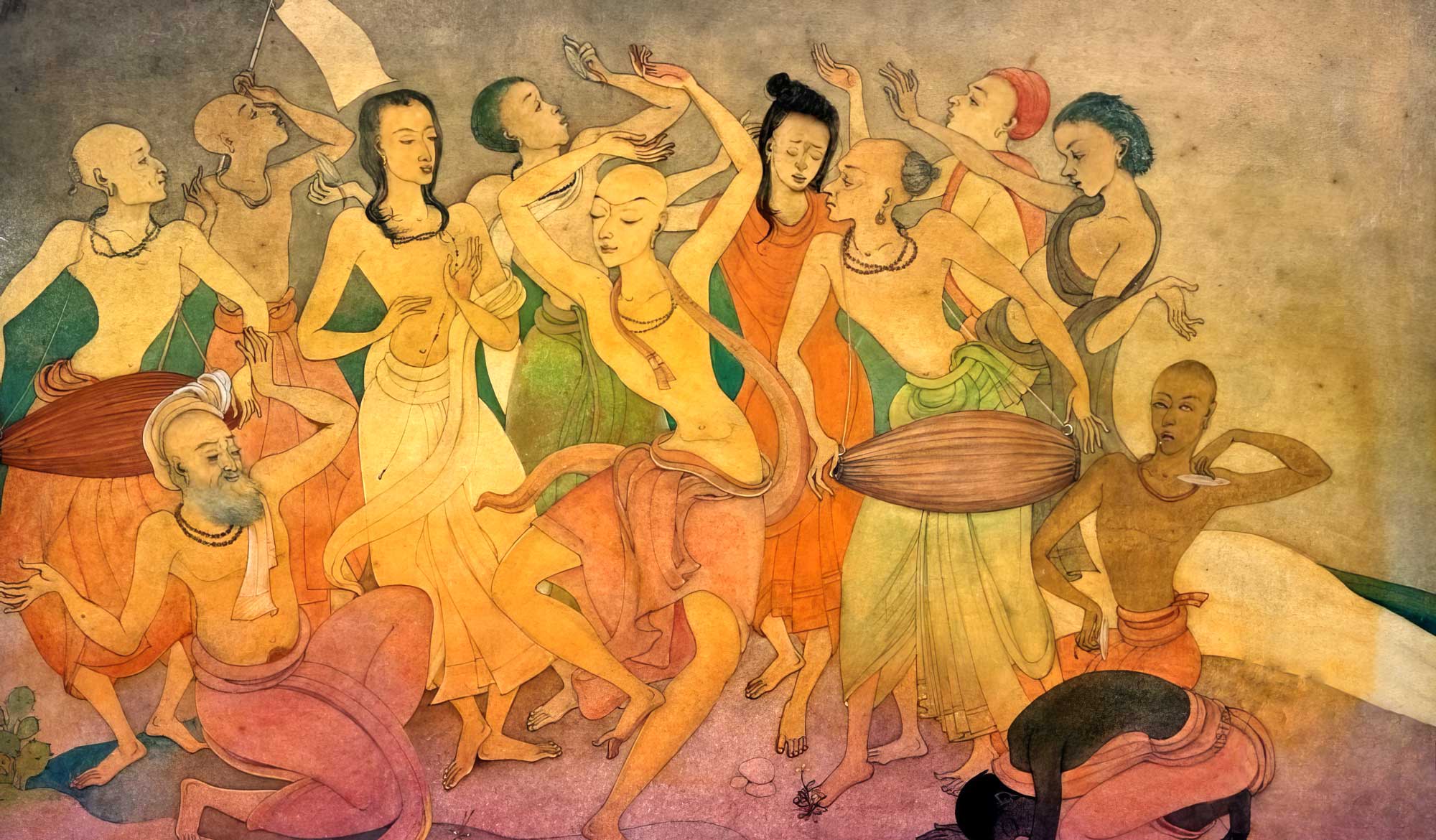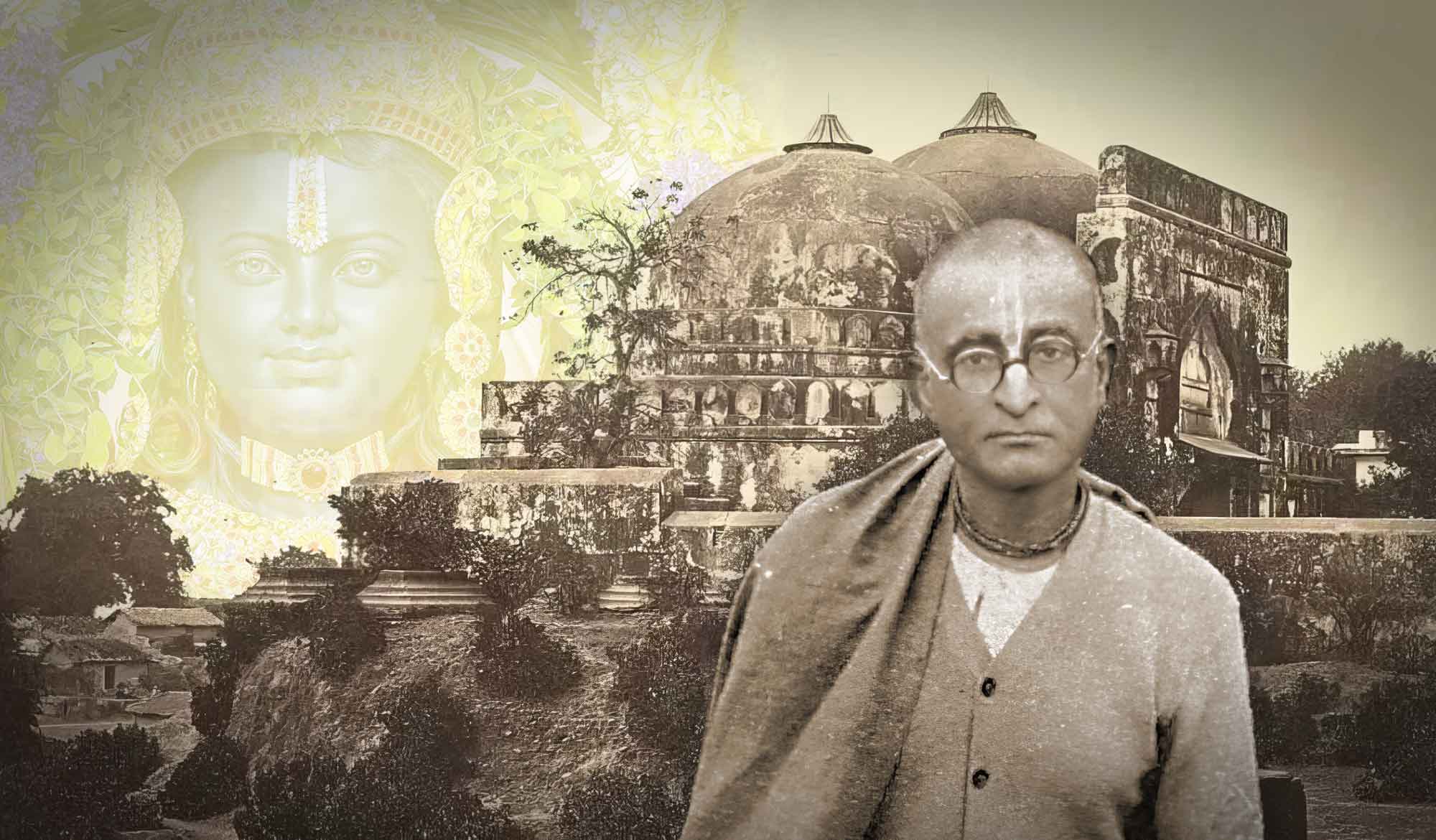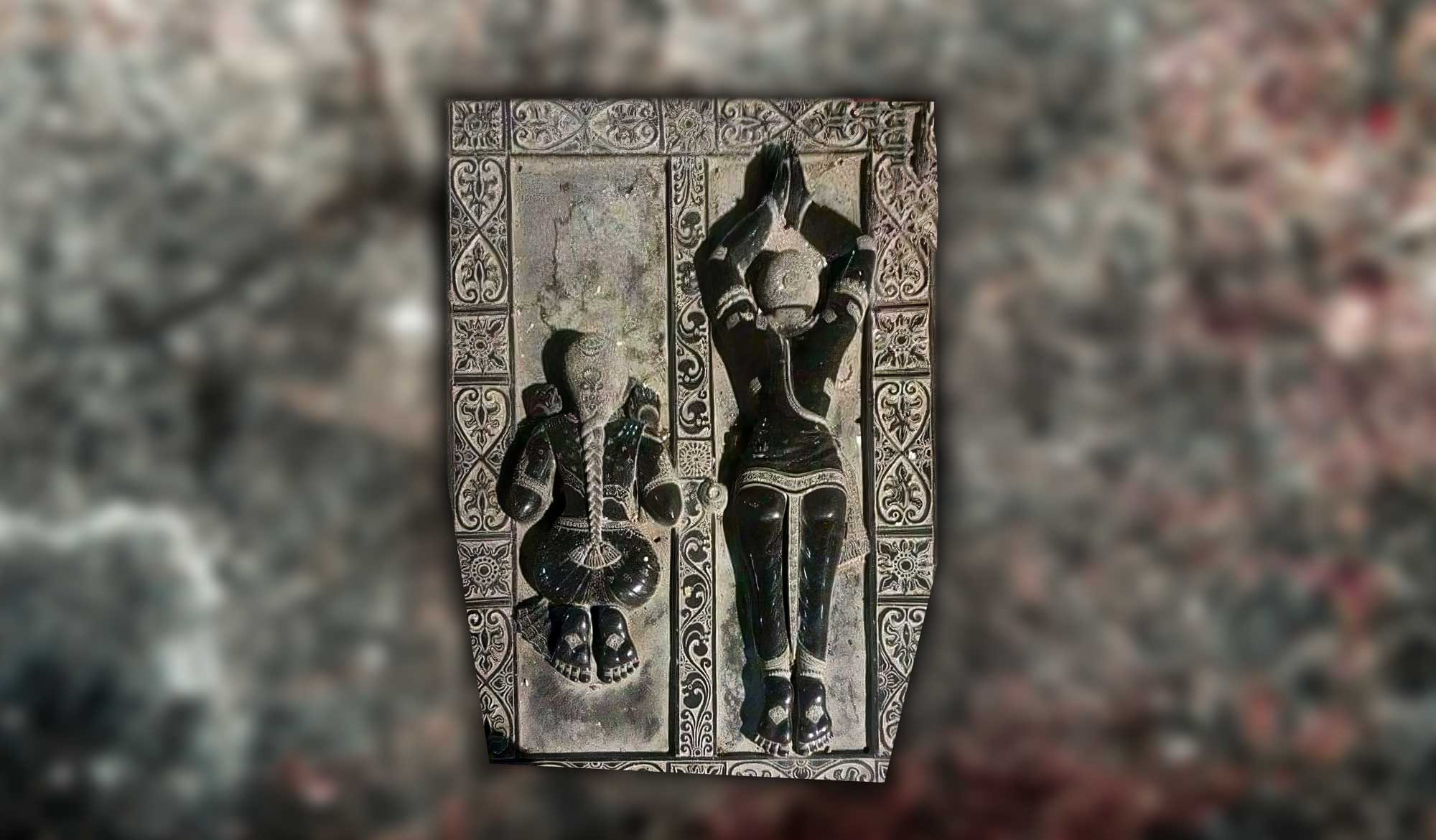Overview
The following English article by Śrīla Śrīdhara Mahārāja was published in Śrīla Prabhupāda's 'Back to Godhead' magazine in 1944. In this essay Śrīla Śrīdhara Mahārāja gives a short synopsis of the theistic undersatnding of vedic culture in line with the Śrīmad Bhāgavatam.
The Vedic culture is considered to be the most ancient and mysterious in the scholarly circle. The great spiritual dictator Śrī Krsna Dvaipayana Vyāsadeva is known to be the deliverer of the Vedic message in its present form as such the great Vyāsa is held in uncommon reverence in all authentic various schools of Vedic interpreters. The last and the greatest gift of the Supreme Personality to the theistic scholars, is the great Bhāgavata Purāṇa.
In this holy book the essence of theism, contained in the Vedas has been revealed in such a living and magnificent manner that it dazzles even the intellect of many Vedic thinkers. The bona-fide followers of the dictator however feel simply charmed to see the beauty of spiritual wisdom unveiled in this great treatise. The Absolute Truth – the Beautiful has been discovered here in His lovely autocratic character, and an automatic affectionate service of the same Supreme Being, has been declared to be the summum-bonum of living beings.
Maximum happiness is of course the goal of life. But people are seen to strive after different objects for the same. Their objects of interest while scientifically arranged may be considered under four heads namely, dharma – the consideration of duty, artha – accumulation of worldly energy, kāma – actual consumption of the necessities of material life and mokṣa – perfect liberation from the forces of nature. Great thinkers of Vedic philosophy however easily agree to dismiss the consideration of trivarga, or the first three forms of objects but there is much controversy over the conception of the fourth goal, ie. liberation.
A section of erudite scholars forcibly assert that complete withdrawal from the material world means a certain (sure) dissolution of individual existence. On the other hand powerful theistic thinkers with transcendental understanding backed up by the faith in revelation upholds strongly that individual existence can be retained in absolutely spiritual relativity – perfectly independent of material existence. Vedic interpreters also class themselves in these two groups:
1) Supporting impersonal salvation.
2) Salvation of person from material relativity.
Both the above schools however admit the authenticity of the sayings and decisions of the great Vyāsadeva though interpreting him in their own respective lines. But Śrī Bhāgavata Purāṇa – the last and the greatest work of the greatest apostle, bewilders the impersonal school to a great extent and clearly condemns mere independence from matter eulogizing a life of positive attainment of spiritual confidential partnership in the Absolute Personal Being – the Supreme Beautiful. In other words, a really liberated soul must have a definite eternal function it is said, as if in the Absolute commonwealth and in discharging the duty wherein the unfettered soul enjoys maximum happiness. The Absolute Autocrat is also the Absolute Good. So autocracy here is always meaning to compensate the limitations of the little partners in their voluntary co-operation and thus promoting dynamic, harmonious, common pastimes.
While perfectly unveiled Godhead shines as Śrī Kṛṣṇa to give us all sorts of engagements in Him. He is the emporium of all sorts of rasas (transcendental mellows) or ecstatic energy. Principle rasas are five in number, such as śānta – a mode of mere allegiance, dāsya – that of actual service, sakhya – that of friendly co-operation, vātsalya – that of filial affection and mādhurya – the mode of consort-partnership. All the modes of rasas, we are told, have been harmonized to form the Spiritual Person of Śrī Kṛṣṇa, the Godhead.
The material world being merely a shadow in character, the very essence of life is to be traced in the causal spiritual realm in its pure positive glory. So according to the Bhāgavata school our life has got its fulfilment in the most optimistic form in the company of Śrī Kṛṣṇa. Such attainment of final adjustment will place our life in perfect harmony and consequently in all round and unique happiness. While not imaginary but real of all reals, such life is certainly the highest attainment.
Related Articles & Books
- Vaiṣṇava Nindā by Śrīla Bhaktivinoda Ṭhākura
- A Devotee is Merciful (Sajjana – Kṛpālu) by Śrīla Bhaktisiddhānta Sarasvatī Ṭhākura
- A Devotee Does Not Engage in Violence (Sajjana – Akṛta-droha) by Śrīla Bhaktisiddhānta Sarasvatī Ṭhākura
- A Devotee is the Epitome of Truth (Sajjana – Satya-sāra) by Śrīla Bhaktisiddhānta Sarasvatī Thākura
- Śiva-tattva & the Position of Lord Śiva by Śrīla B.R. Śrīdhara Mahārāja
- Oh Bābā! Bolacche-re! by Śrīla B.R. Śrīdhara Mahārāja
- Problems and Solutions by Śrīla B.R. Śrīdhara Mahārāja
- The Highest Attainment and Present Adjustment by Śrīla B.R. Śrīdhara Mahārāja
- Āgun Jvālbe (Light the Fire!) by Śrīla B.R. Śrīdhara Mahārāja
- Dharma and the Modern World by Śrīla A.C. Bhaktivedānta Swami Prabhupāda
- Faith Confirms the Absolute by Śrīla B.G. Narasiṅgha Mahārāja
- Go Deeper! by Śrīla B.G. Narasiṅgha Mahārāja
- To Be a Servant by Śrīla B.G. Narasiṅgha Mahārāja
- Harmony – Real and Apparent by Swami B.V. Giri
- The Definition of Faith by Gaura Gopāla Dāsa
- Ātma Samīkṣā – The Value of Introspection by Kalki Dāsa
- Frogs in the Well of Prejudice by Kalki Dāsa
Further Reading
- Śraddhā (Faith) – Quotes by Bhaktivinoda Thakura
- Śraddhā and Śaraṇāgati by Śrīla Bhaktivinoda Ṭhākura
- The Association of Sādhus by Śrīla Bhaktivinoda Ṭhākura
- Epilogue to Śrī Kṛṣṇa Karṇāmṛta by Śrīla Bhaktivinoda Ṭhākura
- Prīti (Love) by Śrīla Bhaktivinoda Ṭhākura
- A Dispute Concerning Mahāprasāda by Śrīla Bhaktivinoda Ṭhākura
- Śraddhā by Śrīla Bhaktivinoda Ṭhākura
- Materialistic Association by Śrīla Bhaktivinoda Ṭhākura
- Dispelling Doubts by Śrīla Bhaktivinoda Ṭhākura
- The Enemy by Śrīla Bhaktivinoda Ṭhākura
- A Critique of the book ‘Vanamālā’ by Śrīla Bhaktivinoda Ṭhākura
- Kali by Śrīla Bhaktivinoda Ṭhākura
- Offences Against Bhakti by Śrīla Bhaktivinoda Ṭhākura
- Kārttika-vrata by Śrīla Bhaktivinoda Ṭhākura
- Violence and Mercy by Śrīla Bhaktivinoda Ṭhākura
- Abandoning Bad Association by Śrīla Bhaktivinoda Ṭhākura
- Sad-guṇa and Bhakti by Śrīla Bhaktivinoda Ṭhākura
- The Process of Initiation by Śrīla Bhaktivinoda Ṭhākura
- Dainya (Humility) by Śrīla Bhaktivinoda Ṭhākura
- Vaiṣṇava Nindā (Offences to Devotees) by Śrīla Bhaktivinoda Ṭhākura
Pilgrimage with Swami Narasiṅgha – Part 7: Keśī Ghāṭa
Continuing with our pilgrimage series, this week Śrīla Narasiṅgha Mahārāja takes us to Keśī Ghāṭā where he tells us about Madhumaṅgala’s meeting with the Keśī demon, what Keśī represents, and how Śrīla Prabhupāda almost acquired Keśī Ghāṭa. Mahārāja also narrates his own experience. This article has been adapted from a number of talks and articles by Narasiṅgha Mahārāja.
Prema Dhāma Deva Stotram with the Narasiṅgha Sevaka Commentary – Verses 61-65
In verses 61 to 65 of 'Prema Dhāma Deva Stotram', Śrīla Śrīdhara Mahārāja narrates the pastime of Śrī Caitanya at Caṭaka Parvata In Purī and explains how the scriptures produced by Brahmā and Śiva are ultimately searching for the personality of Mahāprabhu who is merciful too all jīvas, no matter what their social position.
Prabhupāda Śrīla Sarasvatī Ṭhākura’s Visit to Ayodhyā
With the forthcoming observance of Śrī Rāma Navamī, we present 'Prabhupāda Śrīla Sarasvatī Ṭhākura’s Visit to Ayodhyā' written by Śrīla Bhaktisiddhānta Sarasvatī Ṭhākura Prabhupāda from The Gaudīyā magazine, Vol 3. Issue 21/ In December 1924, after visiting Benares and Prāyāga, Sarasvatī Ṭhākura visited the birth-site of Śrī Rāmācandra in Ayodhyā.
Śaraṇāgati – The Only Path to Auspiciousness
In this article, 'Śaraṇāgati - The Only Path to Auspiciousness', Dhīra Lalitā Dāsī analyses the process of śaraṇāgati (surrender) beginning with śraddhā (faith). She also discusses the role of śāstra and the Vaiṣṇava in connection with surrender.
Pilgrimage with Swami Narasiṅgha – Part 7: Keśī Ghāṭa
Continuing with our pilgrimage series, this week Śrīla Narasiṅgha Mahārāja takes us to Keśī Ghāṭā where he tells us about Madhumaṅgala’s meeting with the Keśī demon, what Keśī represents, and how Śrīla Prabhupāda almost acquired Keśī Ghāṭa. Mahārāja also narrates his own experience. This article has been adapted from a number of talks and articles by Narasiṅgha Mahārāja.
Prema Dhāma Deva Stotram with the Narasiṅgha Sevaka Commentary – Verses 61-65
In verses 61 to 65 of 'Prema Dhāma Deva Stotram', Śrīla Śrīdhara Mahārāja narrates the pastime of Śrī Caitanya at Caṭaka Parvata In Purī and explains how the scriptures produced by Brahmā and Śiva are ultimately searching for the personality of Mahāprabhu who is merciful too all jīvas, no matter what their social position.
Prabhupāda Śrīla Sarasvatī Ṭhākura’s Visit to Ayodhyā
With the forthcoming observance of Śrī Rāma Navamī, we present 'Prabhupāda Śrīla Sarasvatī Ṭhākura’s Visit to Ayodhyā' written by Śrīla Bhaktisiddhānta Sarasvatī Ṭhākura Prabhupāda from The Gaudīyā magazine, Vol 3. Issue 21/ In December 1924, after visiting Benares and Prāyāga, Sarasvatī Ṭhākura visited the birth-site of Śrī Rāmācandra in Ayodhyā.
Śaraṇāgati – The Only Path to Auspiciousness
In this article, 'Śaraṇāgati - The Only Path to Auspiciousness', Dhīra Lalitā Dāsī analyses the process of śaraṇāgati (surrender) beginning with śraddhā (faith). She also discusses the role of śāstra and the Vaiṣṇava in connection with surrender.


